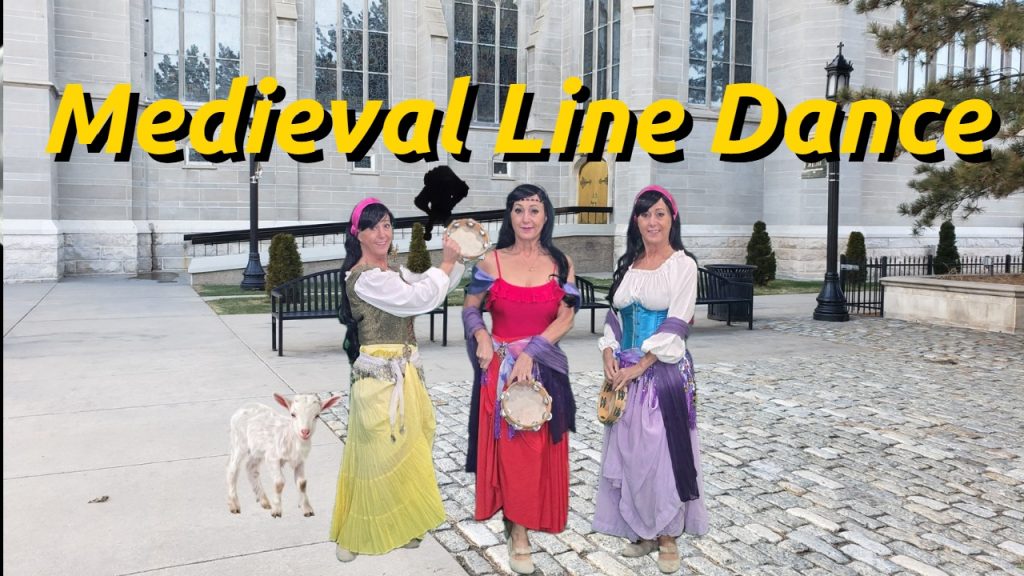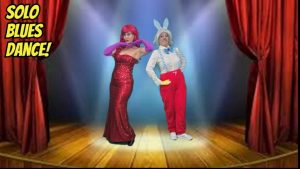Introduction
Join us for a Medieval extravaganza like no other as Esmeralda, the beloved of the Hunchback of Notre Dame, teaches you the most epic dance moves the Middle Ages has ever seen! Immerse yourself in the enchanting world of medieval dance with our lively tutorial on HUNCHBACK of Notre Dame style Maltese (Turkish) Branle dance moves! In this article you will learn the history of the Feast of fools as written about in the Hunchback of Notre Dame, and the history of the Maltese (Turkish) Bransle Then learn how to be a dancing fool with the Maltese (Turkish) Bransle with the Gypsies in the Hunchback of Notre Dame.
History of the Feast Of Fools
The Feast of Fools is not your average Topsy Turvy day. Its history stretches back into the mists of time. It is very similar to the roman festival of Saturnelia, celebrated at the same time of year we celebrate Christmas today. This festival to the Roman god Saturn was celebrated with a role reversal where a mock king was chosen and slaves were in power for a day.
The 8th day of Christmas Festival
The Feast of Fools is the Catholic equivalent of the Roman holiday, celebrated on the 8th day of Christmas on January 1st. During the festival, lower clergy members would take on the roles of bishops and even the Pope, blurring the lines between the sacred and the profane. This inversion of power is strikingly similar to the Topsy Turvy Day, where the mighty Frollo is mocked and humiliated. Today, Topsy Turvy day, Is celebrated in Ireland January 6th.
Feast of Fools
In medieval literature, the Feast of Fools is often used as a metaphor for social Commentary. Writers like Geoffrey Chaucer and François Rabelais drew inspiration from the festival, using it to critique the social hierarchies of their time. This literary fascination with the Feast of Fools speaks to its enduring appeal as a symbol of chaos and rebellion. In the film, the character of Esmeralda is another example of the marginalized taking center stage. Her fiery spirit and defiance of authority are reminiscent of the Feast of Fools, where the oppressed and the marginalized are given a voice.
Dancing Fool
At the heart of the festival is the ritual of the “Dancing Fool,” a mesmerizing spectacle that’s beautiful and bizarre. Dressed in elaborate costumes, the dancers’ parade through the streets, their movements a blur of color and energy. A common element was bells on the dancers’ clothes, similar to the chimes on the gypsy’s skirts.
Dance Branles
Branles were a popular form of carol or circle dance in the Middle Ages an originated in France. It was typically performed at courtly gatherings, masquerade, and balls. It was characterized by chained movements typically in a circle. The Maltese (Turkish) Bransle is a historically inspired dance perfect for the Gypsies in Hunchback of Notre Dame. Join us as they showcase their energy and joy of this medieval art form.
How to Dance The Maltese (Turkish) Bransle :
Step 1 Double to the left and right twice
Commence in a circles with dancers facing inward, and begin Side, together, side tap or kick four times .
Step 2 Three singles and 3 claps forward and back
Forward to center of the circle Step, tap, step, tap, step, tap, clap, clap, clap.
Repeat from the beginning.
Conclusion
In summary, the Topsy Turvy Day serves as a reflection of the Feast of Fools, showcasing how art often draws inspiration from historical and cultural events. What is your favorite dance? Leave a comment and let us know.
Holly Tomazin
Spirit Dancer FBO Project
Adventures in Dance Club
The Knot Best of Weddings Hall of Fame
Winner of the Knot best wedding dance
1500 W. Littleton Blvd. #207
Littleton Co 80120
720-276-0562
info@adventuresindance.com
www.adventuresindance.com
https://www.facebook.com/AdventuresInDance
Wedding specialHolly’s hot wedding tips,
Historically Accurate Princess Dances,
The post Join the Gypsy Dance Craze at the Epic Feast of Fools with the Maltese Bransle! first appeared on Adventures In Dance.


